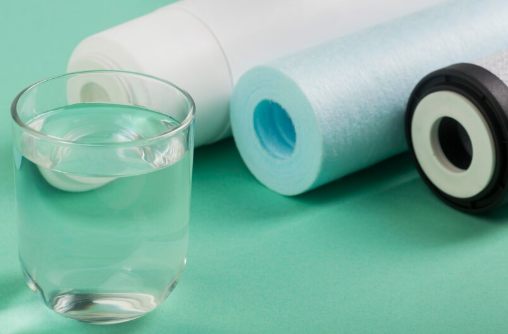How to Choose the Best Pleated Filter Cartridge for Filtration System

In industries ranging from pharmaceuticals to water treatment, filtration plays a crucial role in ensuring the purity and quality of products and processes. Among the various filtration solutions available, pleated filter cartridges stand out due to their high dirt-holding capacity, long service life, and cost-effectiveness. However, with multiple materials, micron ratings, configurations, and compatibility factors to consider, choosing the best pleated filter cartridge for your filtration system can be a challenging task.
This comprehensive guide will walk you through everything you need to know—from understanding what pleated filter cartridges are, to evaluating technical specifications and industry applications, and ultimately, selecting the most suitable cartridge for your system.
Table of Contents
- What Is a Pleated Filter Cartridge?
- Why Use Pleated Filter Cartridges?
- Key Features to Consider
- Types of Pleated Filter Cartridge Materials
- Micron Ratings and Filtration Efficiency
- Industry-Specific Applications
-
-
- Water Treatment
- Food & Beverage
- Pharmaceuticals
- Petrochemicals
- Power Plants
-
- Cartridge Design Options: Size, Length, and End Caps
- How to Match a Filter Cartridge to Your Filtration System
- Common Mistakes to Avoid When Choosing a Cartridge
- Certifications & Compliance Standards
- Maintenance, Replacement & Cost Considerations
- How to Find a Reliable Manufacturer or Supplier
- Frequently Asked Questions (FAQs)
- Final Thoughts
What Is a Pleated Filter Cartridge?
A pleated filter cartridge is a cylindrical filtration element that uses pleated (folded) media to provide a large surface area for capturing contaminants. The pleated design allows for increased dirt-holding capacity while maintaining compact dimensions and consistent flow rates.
These cartridges are typically used for filtering particles, bacteria, and suspended solids from fluids such as water, chemicals, or air in various industrial applications.
Why Use Pleated Filter Cartridges?
Pleated filter cartridges are widely used due to the following advantages:
- Large surface area: The pleated media increases surface area significantly, enhancing filtration performance.
- High dirt-holding capacity: Captures more particles before clogging, leading to longer service life.
- Low pressure drop: Ensures efficient flow even under high contaminant loads.
- Compatibility: Available in a wide range of materials to suit different chemicals and conditions.
- Cost-effective: Long-lasting and efficient, reducing maintenance and replacement frequency.
Key Features to Consider
When selecting a pleated filter cartridge, consider these critical attributes:
- Material compatibility
- Micron rating
- Flow rate capacity
- Operating temperature and pressure
- Certifications and regulatory compliance
- End cap configuration
- Filter media type
Types of Pleated Filter Cartridge Materials
The choice of material determines chemical compatibility, filtration precision, and thermal resistance. Common options include:
| Material | Properties | Common Uses |
| PP (Polypropylene) | Economical, chemical-resistant | Water, beverages, general industrial |
| PTFE | Hydrophobic, chemical-resistant | Chemicals, solvents, high-purity gases |
| PVDF | High mechanical strength, heat-resistant | Pharmaceuticals, food processing |
| PES (Polyethersulfone) | High flow rate, low protein binding | Biopharmaceuticals, microbiological filters |
| Nylon 66 | Good solvent resistance | Inks, paints, lab filtration |
| Glass Fiber | High dirt-holding, depth filtration | Pre-filtration, oils, viscous liquids |
Each material has unique benefits and limitations based on your filtration medium and operating environment.
Micron Ratings and Filtration Efficiency
Micron rating defines the particle size a filter can capture. The lower the micron number, the finer the filtration.
| Micron Rating | Particle Size Removed | Application |
| 0.1 – 0.22 μm | Bacteria, viruses | Sterile filtration |
| 0.45 μm | Microorganisms | Water purification |
| 1 – 5 μm | Fine particles | Pharmaceutical fluids |
| 10 – 20 μm | Medium particles | Food & beverage |
| 30 – 50 μm | Large solids | Pre-filtration, cooling water |
Always align the micron rating with the required filtration precision and flow capacity of your system.
Industry-Specific Applications
Water Treatment
Pleated filters in water systems remove sediments, microorganisms, and chemical residues. Popular in municipal, residential, and industrial treatment systems.
Food & Beverage
Used to ensure product clarity, safety, and shelf life. Must meet FDA and EU food-grade standards.
Pharmaceuticals
Sterile filtration of process water, air, and injectable solutions. Requires validation, integrity testing, and full traceability.
Petrochemicals
Filters out fine particles, catalysts, and water from oil, solvents, and fuels.
Power Plants
Removes contaminants from boiler feed water, cooling water, and turbine oil systems.
Cartridge Design Options: Size, Length, and End Caps
Pleated filter cartridges come in standardized sizes but can vary in:
- Lengths: 5″, 10″, 20″, 30″, 40″
- Diameters: 63 mm to 70 mm (OD)
- End Cap Styles: DOE (double open end), SOE (single open end), Code 7, Code 3, 222/226 O-rings
The right configuration depends on the housing design and sealing requirements of your system.
Here’s a step-by-step checklist:
- Analyze the liquid or gas to be filtered
- Determine required flow rate and pressure
- Evaluate temperature and chemical exposure
- Select appropriate material and micron rating
- Check housing compatibility
- Verify certifications and industry standards
- Consult with the supplier or manufacturer
Common Mistakes to Avoid When Choosing a Cartridge
- Choosing the wrong micron rating, leading to over- or under-filtration
- Using incompatible materials with corrosive chemicals
- Ignoring housing-to-cartridge compatibility
- Neglecting operating pressure or temperature limits
- Prioritizing price over quality and reliability
Certifications & Compliance Standards
When selecting a pleated filter cartridge, look for:
- NSF/ANSI 61 & 42 (for potable water systems)
- FDA CFR Title 21 (for food & beverage use)
- ISO/14001 (quality & environmental standards)
- USP Class VI & BFE testing (biopharmaceutical validation)
- EU Food Contact 10/2011 compliance
These standards ensure safety, quality, and suitability for your industry.
Maintenance, Replacement & Cost Considerations
Maintenance Tips
- Monitor pressure drop regularly
- Follow a preventive replacement schedule
- Store cartridges in a dry, clean environment
Cost Factors
- Material (PTFE and PES cost more than PP)
- Custom sizes or end configurations
- Sterility, integrity test certification
While low-cost options may seem attractive, investing in high-quality cartridges ensures better long-term performance and lower downtime.
How to Find a Reliable Manufacturer or Supplier
Here are essential qualities of a good filter cartridge supplier:
- In-house manufacturing capabilities
- Technical support and customization service
- Consistent quality control
- Fast delivery and international shipping
- Good reviews and track record
You may consider established Chinese manufacturers like Econe Filtration who offer a full range of pleated filter cartridges customized for diverse industrial applications with global service capabilities.
Frequently Asked Questions (FAQs)
What’s the difference between pleated and depth filter cartridges?
Pleated cartridges offer high surface area and low-pressure drop, while depth filters have a thicker media for capturing a broad range of particles.
How often should pleated filter cartridges be replaced?
It depends on usage, contaminant load, and pressure drop. Typically after 3–6 months or when performance drops.
Are pleated filters reusable?
Some can be cleaned and reused a few times, but most are disposable after clogging.
Can I use pleated filters in high-temperature applications?
Yes, but ensure the material is suitable—PTFE or PVDF are ideal for higher temperatures.
Conclusion
Choosing the best pleated filter cartridge for your filtration system requires a solid understanding of both your operational needs and the technical specifications of the cartridge itself. From materials to micron ratings, certifications to compatibility, each factor influences performance, efficiency, and long-term reliability.
Investing the time and effort to select the right cartridge not only ensures consistent output but also protects your system and lowers total operating costs. Whether you’re in water treatment, pharmaceuticals, or food processing, pleated filter cartridges offer a flexible and effective solution for your filtration challenges.





